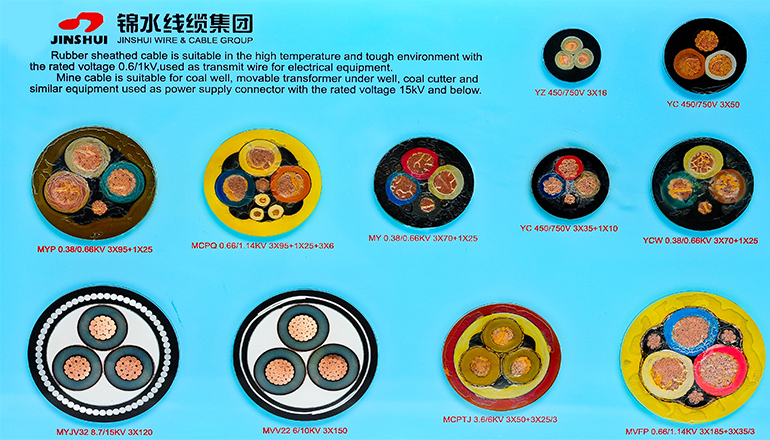- Offices Time:24 Hours Online
- Email:[email protected]
- WhatsApp:+8618339938759
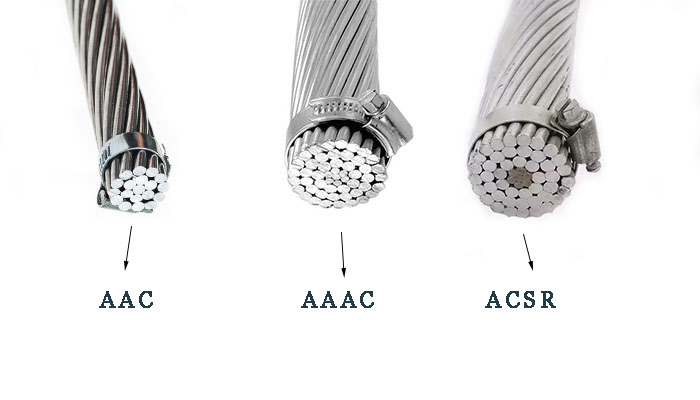
Posted on March 15, 2023
The difference between AAC AAAC and ACSR
Bare conductor refers to an electrical conductor that is not coated or insulated with any kind of material. It is made of a metal such as copper or aluminum and is used for transmitting electrical power or signals.
Bare conductors are typically used in overhead power transmission and distribution systems, where they are suspended from pylons or transmission towers. They are also used in electrical grounding systems and in some industrial applications.
Because bare conductors are not insulated, they are not suitable for use in environments where they may come into contact with people or other objects. In these situations, insulated conductors must be used instead to prevent electric shock and other safety hazards.
There are several types of bare conductors, and the choice of the conductor will depend on the specific application and requirements.
Some of the most common types of bare conductors include:
1.AAC-All Aluminium Conductor
2.AAAC-All Aluminum Alloy Conductor
3.ACSR-Aluminium Conductor Steel Reinforced
what is AAC?
AAC stands for All Aluminum Conductor. It is a type of overhead power transmission conductor made up of stranded aluminum wires that are tightly twisted together. The design of AAC conductors provides a lightweight and corrosion-resistant solution for electrical transmission and distribution systems.
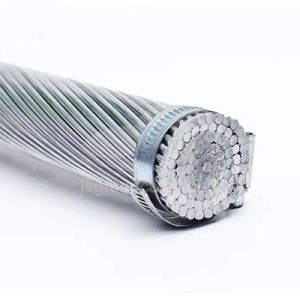
AAC conductors are used primarily for overhead transmission and distribution lines because they have a high degree of conductivity and low weight-to-strength ratio. They are often used in coastal areas or other corrosive environments where steel conductors would not be suitable. AAC conductors are also used for medium-voltage distribution lines because they have low electrical losses and are cost-effective.
AAC conductors are a type of overhead power transmission conductor made up of stranded aluminum wires that offer lightweight, corrosion-resistant, and cost-effective solutions for electrical transmission and distribution systems.
what is AAAC?
AAAC stands for All Aluminum Alloy Conductor. It is a type of overhead power transmission conductor that is similar to AAC, but with the addition of small amounts of other elements, such as magnesium, silicon, and copper, to increase its strength and electrical conductivity.
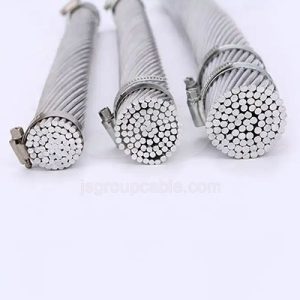
AAAC conductors have better mechanical strength and higher electrical conductivity than AAC conductors. They are used in high-voltage transmission and distribution lines, especially in areas where there is a need for higher electrical conductivity and better strength-to-weight ratio.
AAAC conductors have better resistance to corrosion than ACSR (Aluminum Conductor Steel Reinforced) conductors, which contain steel strands. They are also lighter than ACSR conductors, making them more suitable for use in areas with difficult terrain or where the construction of transmission towers is difficult.
AAAC conductors are a type of overhead power transmission conductor that contains small amounts of other elements to increase its strength and electrical conductivity. They offer better mechanical strength, higher electrical conductivity, and better resistance to corrosion than AAC conductors, and are used in high-voltage transmission and distribution lines.
what is ACSR?
ACSR stands for Aluminum Conductor Steel Reinforced. It is a type of overhead power transmission conductor that consists of one or more layers of aluminum wires wrapped around a central core of steel strands.
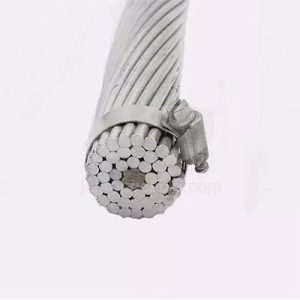
The steel core provides additional strength to the conductor, allowing it to withstand higher tension and support longer spans than all-aluminum conductors. The aluminum outer layers provide excellent electrical conductivity.
ACSR conductors are widely used in overhead power transmission and distribution systems because they offer a cost-effective solution for long-distance transmission. They are especially useful in areas with high wind or ice loading, as the steel core provides additional strength to the conductor.
ACSR conductors are also resistant to corrosion, making them suitable for use in coastal areas or other corrosive environments. However, they are heavier than all-aluminum conductors, which can make them more difficult to install and handle.
ACSR conductors are a type of overhead power transmission conductor that consists of a central core of steel strands wrapped with one or more layers of aluminum wires. They offer a cost-effective solution for long-distance transmission, are suitable for areas with high wind or ice loading, and are resistant to corrosion.
The difference between AAC AAAC and ACSR
AAC, AAAC, and ACSR are all types of overhead power transmission conductors that are commonly used in electrical transmission and distribution systems. While all three conductors are made of aluminum, they differ in terms of their composition, strength, and electrical properties.

AAC (All Aluminum Conductor) is made up of stranded aluminum wires that are tightly twisted together. It is a lightweight conductor that offers a cost-effective solution for low-voltage distribution lines. AAC conductors are ideal for use in coastal areas or other corrosive environments where steel conductors would not be suitable. However, AAC conductors have limited mechanical strength and are not suitable for high-tension transmission lines.
AAAC (All Aluminum Alloy Conductor) is also made of aluminum wires, but it contains small amounts of other elements, such as magnesium, silicon, and copper, to increase its strength and electrical conductivity. AAAC conductors have better mechanical strength and higher electrical conductivity than AAC conductors, making them suitable for high-tension transmission lines. They are also lighter than ACSR conductors, making them more suitable for use in areas with difficult terrain or where the construction of transmission towers is difficult.
ACSR (Aluminum Conductor Steel Reinforced) is made of a central core of steel strands wrapped with one or more layers of aluminum wires. The steel core provides additional strength to the conductor, allowing it to withstand higher tension and support longer spans than all-aluminum conductors. The aluminum outer layers provide excellent electrical conductivity. ACSR conductors are widely used in overhead power transmission and distribution systems because they offer a cost-effective solution for long-distance transmission. They are especially useful in areas with high wind or ice loading, as the steel core provides additional strength to the conductor.
In summary, AAC conductors are suitable for low-voltage distribution lines, AAAC conductors are suitable for high-tension transmission lines, and ACSR conductors offer a cost-effective solution for long-distance transmission and are especially useful in areas with high wind or ice loading. The choice of conductor depends on the specific application, the required mechanical strength and electrical conductivity, and the environmental conditions of the installation site.
Post categories
Most Popular Posts
-
High temperature cable introduction
July 26, 2024 -
Kenya Power and Energy Exhibition 2024
June 11, 2024 -
Introduction of rubber sheathed cable
June 5, 2024 -
The 135th China Canton Fair
March 20, 2024




